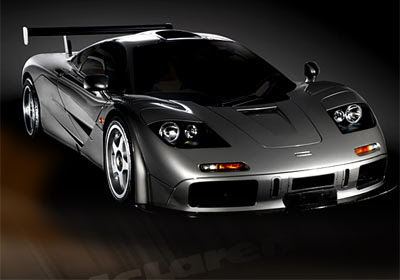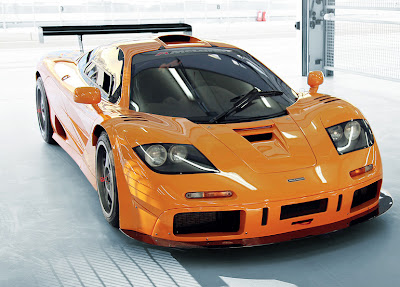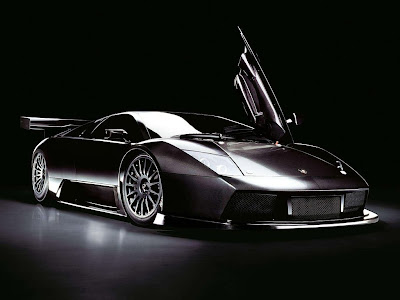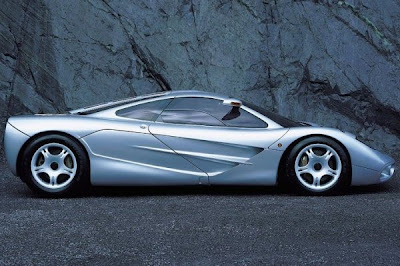Since 2008, Mclaren F1 was the quickest car created on the planet. Though this car was attacked by Bugatti Veyron and Koenigsegg CCR its still, the quickest normally aspirated car ever created.{Other vehicles use necessary induction to arrive at its top speed)
It is the first graphite bodied car, has a 6.1l BMW V12 Engine which can accelarate 0-60 mph in 3.2 mere a few moments. Its formal top rate historical past is 390 km/h (240 mph). The car can arrive at its top rate only in 19.6 mere a few moments.
The Mclaren F1. One of the quickest vehicles in community. Hardly any other vehicles in this modern-day can go with up to its intense rate. When it was released in 1992, it immediately took the headline of the greatest highway car, and it kept the headline for more than a several decades. Sure, there are more quickly vehicles that have eventually left it in it’s dirt through the decades, but the F1 continues to be the quickest car with a naturally-aspirated website. Faster vehicles like the Bugatti Veyron, Koenigsegg CCXR, and the SSC Ultimate Aero TT all have applications that have turbochargers or superchargers. The Mclaren’s does not need to be increased. It’s BMW engine is already a monster. The Mclaren F1 was also the most costly car when it came. The generating location is in the center, which indicates it has three chairs. It was the first as well as fiber-bodied car. Mclaren also designed a powerful indication if you want for it to function with the crazy quantity of twisting. The F1 also had it’s website covered with precious metal, because precious metal shows warm best. The F1 had really set the conventional for hypercars. It was the quickest car in community until the Bugatti Veyron came, but they both are almost consistently coordinated up. The Mclaren is a very essential car, and quick. So now you might be thinking how quick it does go.
The Mclaren F1 is an legendary masterwork. Not only does it confirm that old vehicles can package a extensive impact to other vehicles in the existing, but it’s a rather eye-catching device that was expected to be designed without bargain and with genuine technological innovation extravagance. Sure, there may be very few entertainment and practicalities, it may be costly, the top side may be a bit uncreative, and it might not be as relaxed as you might’ve expected, but it’s simple to use in every day generating, and it’s a purebred persons car. Anyone would really like to get their palms on one, if they had the cash, and the possibilities of credit one from well-known and vibrant individuals. Even though it went out of generation in 1998, it’s still very well-known these days, and is regarded a real star in car historical past.
The McLaren F1 is a athletics car designed and created by Gordon Murray and McLaren Automotive. On Goal 31, 1998, it set the historical past for the quickest generation car on the planet, 240 mph (391 km/h). As of May 2009, the McLaren F1 is won by three more quickly vehicles in large top rate, but is still the quickest normally aspirated generation car.
The car functions several amazing styles and technological innovation. It is light and has a more more powerful framework than even most of its contemporary challenges and competition despite having one chair more than most identical athletics vehicles, with the driving chair in the center. It functions a very effective website and is somewhat monitor driven, but not to the level that it jeopardises each day fantastic and relaxation. It was created as an training in developing what its developers expected would be regarded the greatest highway car. Despite not having been designed as a monitor device, a customized competition car version of the car won several events, such as the 24 Time of Le Guys in 1995, where it experienced purpose-built magic size vehicles. Production started in 1992 and led to 1998. In all, 106 vehicles were created, with some versions in the style.
Chief professional Gordon Murray's style was a typical one among developers of high-performance cars: low bodyweight and higher energy. This was obtained through use of high-tech and costly elements like graphite, titanium, precious metal, the mineral mineral magnesium and kevlar. The McLaren F1 was the first generation car to use a carbon-fibre monocoque case.
The concept was first created when Murray was awaiting a journey house from the eventful German Fantastic Corrt in 1988; Murray received a design of a three seater athletics car and recommended it to Ron Dennis, delivered as the concept of developing the greatest highway car, a concept that would be intensely affected by the Method One practical knowledge and technological innovation of the organization and thus indicate that technique and understanding through the McLaren F1.
Gordon Murray was adament that the engine for this car be normally aspirated to improve excellence and car owner management. Turbochargers and superchargers improve energy but they improve complication and can reduce excellence as well as presenting an extra element of latency and decrease of reviews, the capability of the car owner to sustain highest possible management of the website is thus lowered. Murray at first contacted Ford for an NA website with 550 bhp (410 kW; 560 PS), 600 mm (23.6 in) prevent duration and a complete bodyweight of 250 kg (551 lb), it should be producing from the Method One engine in the then-dominating McLaren/Honda vehicles.
When Ford rejected, Isuzu, then preparing an admittance into Method One, had a 3.5 V12 website being examined in a Lotus case. The organization was very considering having the website installed into the McLaren F1. However, the developers desired an website with a confirmed style and a rushing reputation.
The outcome is a custom-built 6.1 L (6064 cc) 60-degree V12 with an aluminum aluminum prevent and go, 86 mm (3.4 in) x 87 mm (3.4 in) bore/stroke, quad cost camshafts for highest possible mobility of management over the four valves per pump and a cycle generate for the camshafts for highest possible excellence, the website is dry sump. At 266 kg (586 lb), the producing website was a little bit bulkier than Murray's unique highest possible requirements bodyweight of 250 kg (551 lb) but was also significantly more extremely effective than he had specified. The unique designed website for the McLaren F1 is known as the BMW S70/2.
The graphite body sections and monocoque necessary considerable warm insulating material in the website area, so Murray's remedy was to range the website bay with a very powerful heat-reflector: precious metal aluminum foil. Just about 25 g (0.8 ounce) of precious metal was used in each car.
It is the first graphite bodied car, has a 6.1l BMW V12 Engine which can accelarate 0-60 mph in 3.2 mere a few moments. Its formal top rate historical past is 390 km/h (240 mph). The car can arrive at its top rate only in 19.6 mere a few moments.
The Mclaren F1. One of the quickest vehicles in community. Hardly any other vehicles in this modern-day can go with up to its intense rate. When it was released in 1992, it immediately took the headline of the greatest highway car, and it kept the headline for more than a several decades. Sure, there are more quickly vehicles that have eventually left it in it’s dirt through the decades, but the F1 continues to be the quickest car with a naturally-aspirated website. Faster vehicles like the Bugatti Veyron, Koenigsegg CCXR, and the SSC Ultimate Aero TT all have applications that have turbochargers or superchargers. The Mclaren’s does not need to be increased. It’s BMW engine is already a monster. The Mclaren F1 was also the most costly car when it came. The generating location is in the center, which indicates it has three chairs. It was the first as well as fiber-bodied car. Mclaren also designed a powerful indication if you want for it to function with the crazy quantity of twisting. The F1 also had it’s website covered with precious metal, because precious metal shows warm best. The F1 had really set the conventional for hypercars. It was the quickest car in community until the Bugatti Veyron came, but they both are almost consistently coordinated up. The Mclaren is a very essential car, and quick. So now you might be thinking how quick it does go.
The Mclaren F1 is an legendary masterwork. Not only does it confirm that old vehicles can package a extensive impact to other vehicles in the existing, but it’s a rather eye-catching device that was expected to be designed without bargain and with genuine technological innovation extravagance. Sure, there may be very few entertainment and practicalities, it may be costly, the top side may be a bit uncreative, and it might not be as relaxed as you might’ve expected, but it’s simple to use in every day generating, and it’s a purebred persons car. Anyone would really like to get their palms on one, if they had the cash, and the possibilities of credit one from well-known and vibrant individuals. Even though it went out of generation in 1998, it’s still very well-known these days, and is regarded a real star in car historical past.
The McLaren F1 is a athletics car designed and created by Gordon Murray and McLaren Automotive. On Goal 31, 1998, it set the historical past for the quickest generation car on the planet, 240 mph (391 km/h). As of May 2009, the McLaren F1 is won by three more quickly vehicles in large top rate, but is still the quickest normally aspirated generation car.
The car functions several amazing styles and technological innovation. It is light and has a more more powerful framework than even most of its contemporary challenges and competition despite having one chair more than most identical athletics vehicles, with the driving chair in the center. It functions a very effective website and is somewhat monitor driven, but not to the level that it jeopardises each day fantastic and relaxation. It was created as an training in developing what its developers expected would be regarded the greatest highway car. Despite not having been designed as a monitor device, a customized competition car version of the car won several events, such as the 24 Time of Le Guys in 1995, where it experienced purpose-built magic size vehicles. Production started in 1992 and led to 1998. In all, 106 vehicles were created, with some versions in the style.
Chief professional Gordon Murray's style was a typical one among developers of high-performance cars: low bodyweight and higher energy. This was obtained through use of high-tech and costly elements like graphite, titanium, precious metal, the mineral mineral magnesium and kevlar. The McLaren F1 was the first generation car to use a carbon-fibre monocoque case.
The concept was first created when Murray was awaiting a journey house from the eventful German Fantastic Corrt in 1988; Murray received a design of a three seater athletics car and recommended it to Ron Dennis, delivered as the concept of developing the greatest highway car, a concept that would be intensely affected by the Method One practical knowledge and technological innovation of the organization and thus indicate that technique and understanding through the McLaren F1.
Gordon Murray was adament that the engine for this car be normally aspirated to improve excellence and car owner management. Turbochargers and superchargers improve energy but they improve complication and can reduce excellence as well as presenting an extra element of latency and decrease of reviews, the capability of the car owner to sustain highest possible management of the website is thus lowered. Murray at first contacted Ford for an NA website with 550 bhp (410 kW; 560 PS), 600 mm (23.6 in) prevent duration and a complete bodyweight of 250 kg (551 lb), it should be producing from the Method One engine in the then-dominating McLaren/Honda vehicles.
When Ford rejected, Isuzu, then preparing an admittance into Method One, had a 3.5 V12 website being examined in a Lotus case. The organization was very considering having the website installed into the McLaren F1. However, the developers desired an website with a confirmed style and a rushing reputation.
The outcome is a custom-built 6.1 L (6064 cc) 60-degree V12 with an aluminum aluminum prevent and go, 86 mm (3.4 in) x 87 mm (3.4 in) bore/stroke, quad cost camshafts for highest possible mobility of management over the four valves per pump and a cycle generate for the camshafts for highest possible excellence, the website is dry sump. At 266 kg (586 lb), the producing website was a little bit bulkier than Murray's unique highest possible requirements bodyweight of 250 kg (551 lb) but was also significantly more extremely effective than he had specified. The unique designed website for the McLaren F1 is known as the BMW S70/2.
The graphite body sections and monocoque necessary considerable warm insulating material in the website area, so Murray's remedy was to range the website bay with a very powerful heat-reflector: precious metal aluminum foil. Just about 25 g (0.8 ounce) of precious metal was used in each car.













